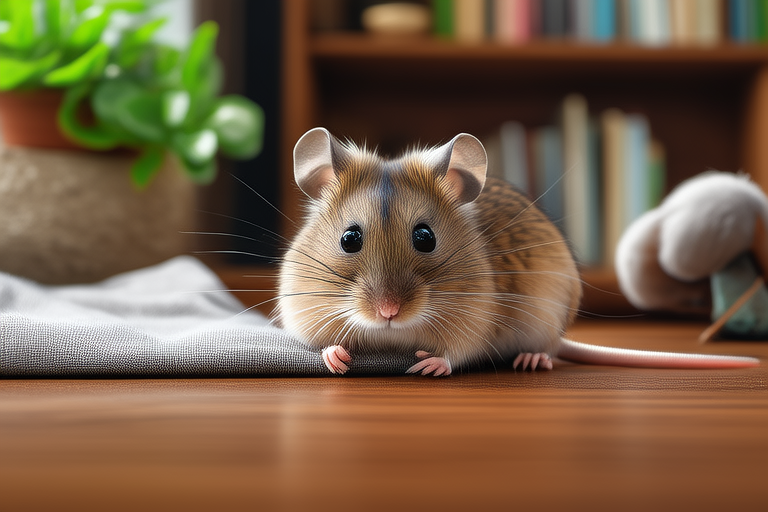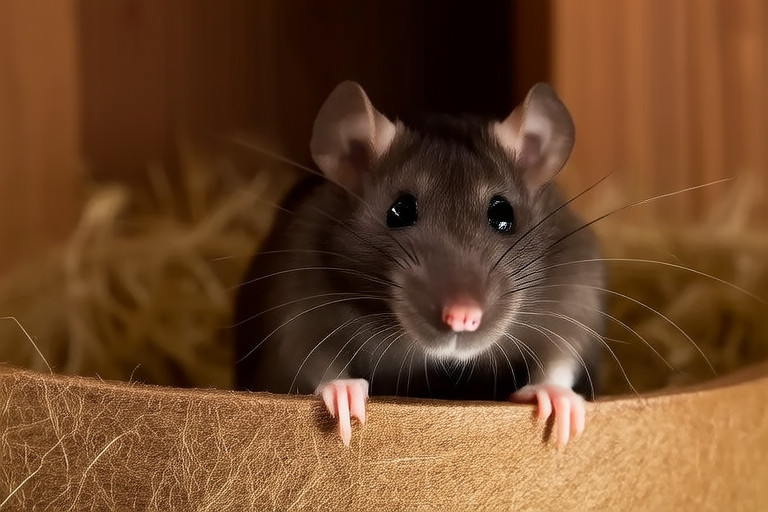
How to Make Your Fancy Rat Fall in Love With You
Welcoming a fancy rat into your home is an exciting adventure that brings joy and companionship. However, forming a deep bond with your new furry friend requires time, effort, and understanding. This guide will help you establish trust and build a lasting relationship with your rat through various strategies, including understanding their behavior, creating a comfortable environment, proper handling techniques, diet enrichment, and interactive play ideas.
Understanding Your Rat’s Behavior
Fancy rats are social animals that thrive in groups, but they can also form strong bonds with their human caregivers. To understand your rat’s behavior, observe them closely in their natural environment. Rats are generally curious and active, and they communicate through body language, vocalizations, and scent marking.
- Body Language: A relaxed rat will have its ears up and forward, while a stressed or fearful rat may flatten its ears against its head. Tail wagging can indicate excitement or curiosity.
- Vocalizations: Rats make various sounds, such as chirping, squeaking, and purring. Chirping is often associated with excitement or distress, while purring usually indicates contentment.
- Scent Marking: Rats use urine and gland secretions to mark territory and objects. Understanding these behaviors will help you interpret your rat’s needs and emotions.
Creating a Comfortable Environment
Your rat’s environment plays a crucial role in their well-being and comfort. A clean, spacious cage with appropriate bedding, toys, and hiding spots will encourage exploration and reduce stress. Ensure the cage is placed in a quiet area away from drafts, direct sunlight, and excessive noise.
- Cage Setup: Provide multiple levels, ramps, and platforms for climbing and exploring. Incorporate a variety of nesting materials, such as fleece or paper towels, to create cozy sleeping areas.
- Toys and Enrichment: Offer chew toys, tunnels, and foraging opportunities to keep your rat mentally stimulated. Rotate toys periodically to prevent boredom.
- Hiding Spots: Provide plenty of hiding spots, like cardboard boxes or hammocks, where your rat can retreat when feeling overwhelmed or tired.
Proper Handling Techniques
Handling your rat gently and consistently is essential for building trust. Always support their body properly, especially around the abdomen and back legs. Approach your rat calmly and avoid sudden movements that could startle them.
- Approach: Sit quietly near the cage for a few minutes before attempting to handle your rat. Let them approach you first, which helps build confidence.
- Support: When picking up your rat, gently place one hand under their chest and the other under their hindquarters. Support their entire body to avoid injury.
- Patient Touch: Use gentle strokes along their back and neck to familiarize them with your touch. Avoid touching their belly or tail unless they show signs of comfort.
Diet Enrichment
A balanced diet is crucial for your rat’s health and happiness. In addition to high-quality commercial pellets, offer fresh fruits, vegetables, and occasional treats. Diet enrichment can stimulate their senses and provide mental stimulation.
- Foraging Toys: Hide small pieces of food in foraging toys or create DIY puzzles to encourage natural foraging behaviors.
- Variety: Rotate different types of fruits, vegetables, and treats to keep meals interesting. Offer a mix of crunchy, soft, and juicy foods to cater to their preferences.
- Safe Treats: Limit sugary or fatty treats to avoid obesity and dental issues. Opt for healthy options like apple slices, carrots, or plain Cheerios.
Interactive Play Ideas
Spending quality time with your rat through interactive play can strengthen your bond and provide entertainment for both of you. Engage in activities that stimulate their minds and bodies.
- Tunnel Exploration: Create a tunnel system using cardboard tubes or PVC pipes. Encourage your rat to explore by placing treats at the end of the tunnel.
- Hide and Seek: Hide yourself or small treats around the room and let your rat find you or the treats. This game promotes problem-solving skills and strengthens the bond between you and your rat.
- Obstacle Course: Set up an obstacle course using ramps, tunnels, and platforms. Challenge your rat to navigate through the course and reward them with treats upon completion.
The Importance of Patience and Consistency
Building a strong bond with your fancy rat takes time and consistent effort. Be patient and give your rat space if they show signs of discomfort or fear. Trust develops over time, and every interaction contributes to a deeper connection.
- Consistent Routine: Establish a daily routine that includes feeding, playtime, and handling sessions. Predictability helps your rat feel secure and confident.
- Persistent Interaction: Even if your rat seems uninterested initially, continue interacting with them gently and positively. Over time, they will become more comfortable and responsive.
- Positive Reinforcement: Reward good behavior with treats, praise, or extra playtime. Positive reinforcement encourages desirable behaviors and strengthens the bond.
Deeper Insights for Experienced Owners
Experienced rat owners can further enhance their bond by incorporating advanced techniques and understanding nuanced behaviors.
- Advanced Training: Teach your rat simple tricks like fetching or coming when called. Clicker training can be particularly effective for shaping desired behaviors.
- Understanding Stress Signals: Recognize subtle signs of stress, such as decreased activity, overgrooming, or changes in eating habits. Address these concerns promptly to maintain your rat’s well-being.
- Enriched Socialization: If you have multiple rats, ensure they have adequate space and resources to prevent conflicts. Socializing your rat with others can also improve their overall well-being.
Conclusion
Forming a deep bond with your fancy rat requires time, patience, and understanding. By observing their behavior, creating a comfortable environment, practicing proper handling techniques, enriching their diet, and engaging in interactive play, you can foster a loving and trusting relationship. Remember that every rat is unique, and it’s essential to adapt your approach based on their individual needs and preferences. With dedication and consistency, you’ll build a strong, lifelong bond with your beloved pet.






